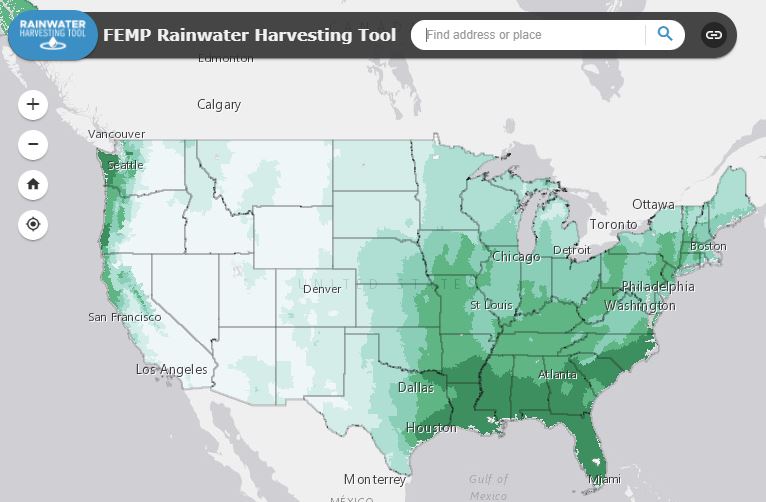Rainwater
Harvesting Tool
Rainwater
Harvesting Tool
The Rainwater Harvesting Tool is an online geographic information system (GIS)-based mapping tool that provides data related to rainwater harvesting potential across the United States. The data indicates potential for harvesting rainwater for use in general applications and specifically for landscape irrigation.
This first-of-its kind tool was developed by Pacific Northwest National Laboratory in collaboration with the Federal Energy Management Program (FEMP) to help federal agencies strategically prioritize commercial rainwater harvesting projects. It is now freely and publicly accessible to anyone interested in its use to support federal, commercial, or even residential rainwater harvesting project decisions.
Benefits of Harvesting Rainwater

Rainwater harvesting can provide a key alternative water source to federal facilities, as well as other commercial and residential properties. Rainwater harvesting systems capture, divert, and store precipitation from rooftops for later use.
Harvested rainwater is commonly used for non-potable applications such as:
- Landscape irrigation
- Toilet and urinal flushing
- Vehicle washing
- Dust suppression
- Cooling tower makeup
- Ornamental pond and fountain filling.
In addition to providing alternative water, harvesting rainwater can also potentially prevent stormwater from entering waterways, helping agencies meet federal requirements for stormwater management. Reducing stormwater eases flooding and erosion by slowing runoff and allowing it to soak into the ground, turning stormwater problems into a water supply asset. Less runoff also means less contamination of surface water from sediment, fertilizers, pesticides, and other pollutants that runoff may transport.
Using the Rainwater Harvesting Tool
The FEMP website provides easy access to the Rainwater Harvesting Tool, along with more information about its development, user guides on how to navigate the tool and apply the data it provides, and tips for planning rainwater harvesting projects.